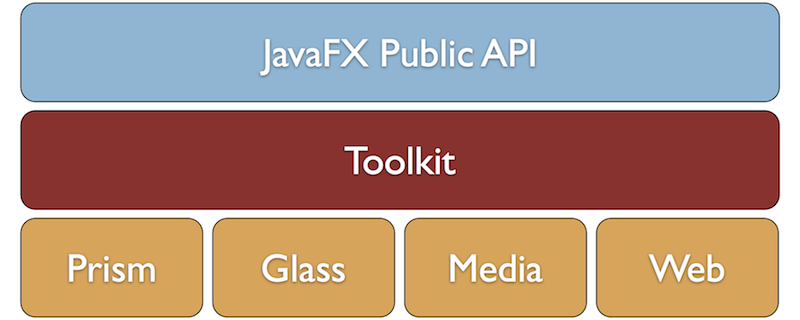
A Short Tour Through JavaFX-UI-Common
 We’ve just recently announced the release of the “javafx-ui-common” project into OpenJFX. The name may be a little underwhelming, but the content is absolutely core to JavaFX. For most developers interested in contributing to JavaFX and in understanding how the system works, javafx-ui-common and javafx-ui-controls will be the two most important projects, both of which are now open source, and are part of the “JavaFX Public API” shown in the diagram. For developers interested in porting JavaFX to other platforms or improving the graphics performance — well we will be open sourcing Prism and Glass in the next few months :-).
We’ve just recently announced the release of the “javafx-ui-common” project into OpenJFX. The name may be a little underwhelming, but the content is absolutely core to JavaFX. For most developers interested in contributing to JavaFX and in understanding how the system works, javafx-ui-common and javafx-ui-controls will be the two most important projects, both of which are now open source, and are part of the “JavaFX Public API” shown in the diagram. For developers interested in porting JavaFX to other platforms or improving the graphics performance — well we will be open sourcing Prism and Glass in the next few months :-).
Since javafx-ui-common is such a foundational part of the JavaFX platform, I thought I should give a short tour of what is in there, including the (gasp!) non-public portions. As always, non-public API (or rather, unsupported API, meaning anything that is not in the javafx namespace such as com.sun.*) cannot be depended on from release to release. But for those of you wondering how things work, there is some very important stuff buried in the unsupported packages, and for those of you wanting to actually hack on OpenJFX, this will be of even greater interest. If you haven’t yet, you might want to brush up on the overall architecture with this article.
In fact, our tour will begin in the unsupported package, with the Toolkit class, which you see as the second layer in the above diagram. This article is of interest to anybody wanting to work on JavaFX itself.


